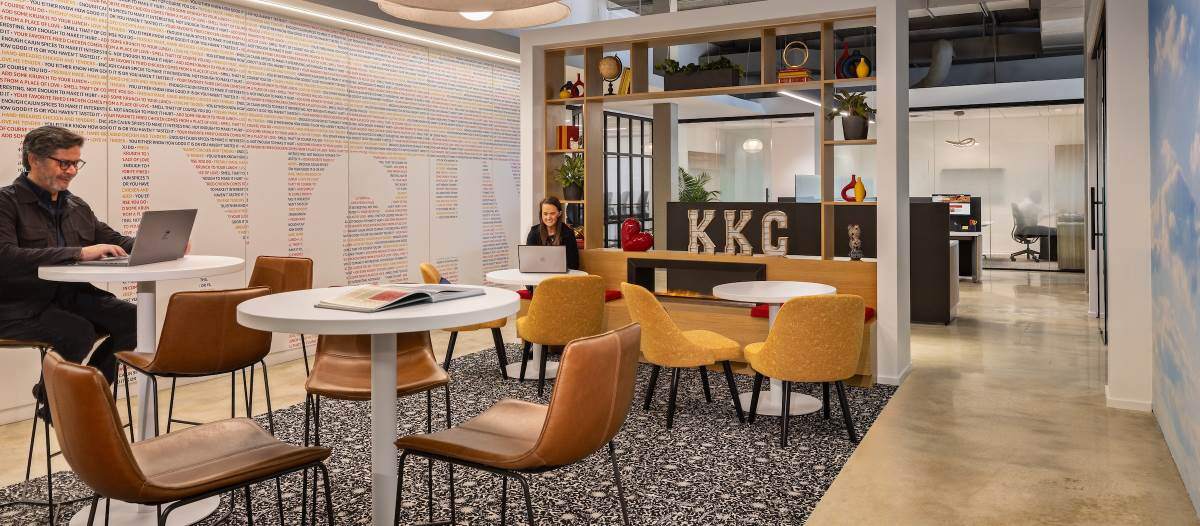Hybrid Work + Smart Technology
Preparing for tomorrow’s offices

Hybrid working has brought a unique range of challenges to the contemporary facility manager. With employees working as much from home as they are in the office, space management has become problematic. Workspaces need to be ready on demand, yet unnecessary expenditure on utilities also needs to be capped. Optimization is required. But is it possible to make efficiencies in energy and cleaning while still being prepared for the unexpected full house?
Technology provides the answer to the flexible workspace. With occupancy monitoring, FM can be automated. Smart sensors can provide real-time insights to detect patterns and prevent waste. If an office is not in use, its lights do not need to be on, heating can be reduced and cleaning schedules relaxed. Sensor technology has the power to reduce waste and increase efficiency within minutes.
It is important for business leaders to understand the correlation between occupancy monitoring and waste reduction, how they can best utilize space when deploying the hybrid working model and the use of tech in enhancing efficiencies.
Heading toward a hybrid workplace
Returning to spaces in the COVID-19 pandemic, office occupiers and investors are searching for high-quality office space that meets the needs of the hybrid work client. In other words, there is a high demand for quality, which occurs following every market slump. Places that provide the greatest facilities, technology, ESG credentials and user experience have lower vacancy rates and therefore significantly more demand than those that do not.
Hybrid work customers place an increased value on flexibility, experience, world-class amenities and location. These characteristics existed before the rise in hybrid work, but they are much more important in the modern workplace given the need for employees to be connected, cooperate and push the bounds of innovation. In essence, the post-COVID-19 hybrid work office has become a hub for experience and technology is assisting in this endeavor.
How smart sensors help with changing space layouts
The first thing employees expect to see when they walk into their workplace is a desk. With more and more companies hot desking, finding workspace might be tough. The dilemma is exacerbated by the rise in hybrid work, with many companies cutting the size of their real estate, further reducing available work space. Organizations must be prepared for how their space is used, for example, by instituting rosters for when teams or departments are on site to collaborate.
However, it is equally critical that FMs have a clear understanding of occupancy and space utilization to ensure that there is enough capacity to satisfy predicted employee demand. Using Internet of Things (IoT) technology provides an easy, reliable and cost-effective solution to acquire the necessary data and offer a baseline from which real estate choices may be made. Tiny sensors can be used to anonymously identify presence at a specific desk. Analyzing this data on an hourly, daily, weekly and monthly basis will provide a clear picture of occupancy levels, as well as use changes and helps in realistic desk and space planning.
How smart sensors help with employee well-being & happiness
Companies must understand the utilization/occupancy of their offices, workstations and meeting spaces to improve employee comfort and happiness while making the most use of expensive real estate. Sensors collect real-time data on human presence in a meeting room, identify when a person is seated at a workstation, and inform employers whether or not meeting rooms are occupied. Data on how frequently restrooms, offices and meeting rooms are used, for example, assist with predicting when cleaning is required, allowing for more efficient use of resources. Manual upkeep, cleaning and real estate planning should all be automated.
With employees working from the office only some of the time, the amount of cleaning needed will change dramatically from day to day. If no one uses a room or a desk, there is no need for cleaning. Smart cleaning tools are now available that provide cleaning staff a complete overview of all cleaning activities needed, access to communication tools, and the opportunity to mark scheduled and completed cleaning jobs. FMs can base cleaning and maintenance on actual usage rather than human scheduling by establishing criteria for how frequently cleaning should be done.
At the same time, smart sensors can also be used to receive feedback and service requests from tenants. Touch buttons can be deployed throughout the office for employees to give feedback on their environment or request cleaning services, to which the FM team can respond to in real time. This ensures employees are happy and have control over their working environment whenever they are in the office.
Optimizing the office for energy efficiency
FMs are usually advised to review energy and utility bills for trends in energy consumption. While this is sound advice, there are faster, simpler and more accurate methods for identifying use trends depending on office capacity. There are several technological options available today that can assist in continually measuring and optimizing energy use. The use of low-cost, easy-to-install sensors and controllers is one of the critical solutions.
Sensor technology’s capacity to deliver valuable and personalized findings is continually improving. As a result, using sensor data to improve FM services to cater to a more volatile use in offices becomes more doable. Analytics suited to clients’ individual hybrid office requirements will cut labor hours, resource requirements and total cost. In other words, sensors can give FMs the data needed to make educated decisions about how to improve the energy efficiency at their facilities.
Conclusion
Leading real estate and FM firms are utilizing sensor technologies to assist with the rise in hybrid work. This technology is now available to businesses of all sizes, and solutions for environmental monitoring, space occupancy, property damage protection and feedback and service are more secure, robust and affordable than ever before. The sooner FMs see the potential of sensors in the workplace, the sooner they can put them in place to assure an optimized office for the hybrid workplace, providing a better experience for their tenants, and offering services that their customers will love.

Read more on Workplace or related topics Workplace Utilization
Explore All FMJ Topics









